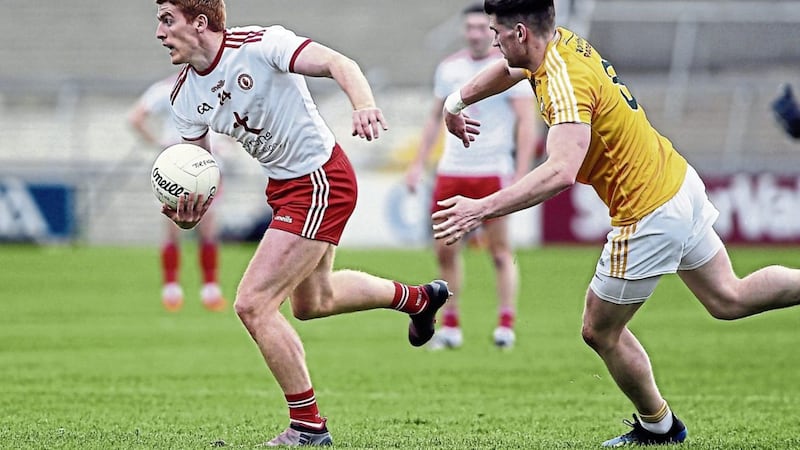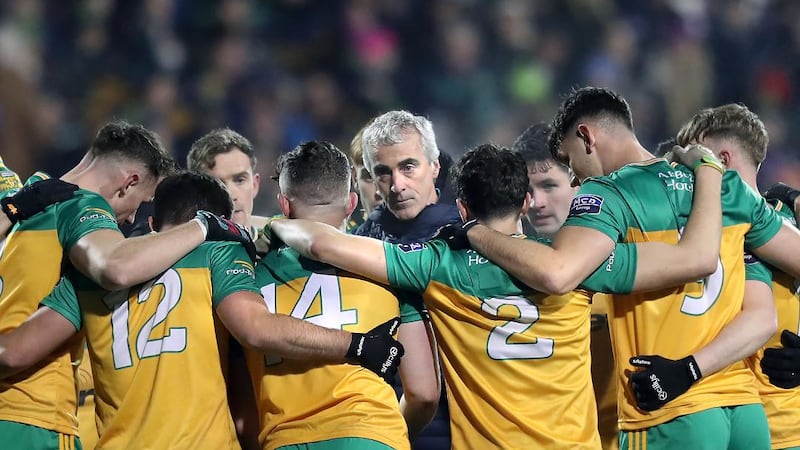TRAINING is likely to pose a greater infection risk than matches as the GAA moves towards a return to play.
However, analysis conducted and published by Newry firm STATSports suggests that even during games players will spend almost a quarter of their game-time in proximity (within a 2m radius) of at least one other player.
That is attributed to the man-marking tactics deployed by many teams.
The recent focus on kick-out strategies also leads to a much increased number of incursions (players coming into close proximity to each other), especially during training sessions.
The STATSports white paper entitled ‘GAA player proximity report’ also found that in a collective training session lasting around 70 minutes most players are in proximity with more than 90 per cent of their team-mates.
During matches, which lasted on average just over 75 minutes, each player was exposed to 539 incursions per game (on average). While the longest incursion tended to be around one minute, the average incursion duration was only 2.5 seconds.
It is important to note that there were many incursions, though, with on average a rate of 17 incursions per minute observed from each player.
These figures increased significantly during training sessions, which lasted 87 minutes on average. In training, players showed 43 incursions per minute with a total of 3,520 incursions per player per training session.
The average duration for each incursion observed in training was 1.6 seconds - but the longest-lasting incursion observed was two-and-a-half minutes.
However, the report’s author, STATSports sport scientist Ryan McLaughlin, suggests that it will be “quite easy to modify training sessions towards a more ‘Covid-Friendly’ approach.”
As the training data was collected prior to the Covid-19 pandemic, plans for returning to training perhaps collectively or in smaller groups, could involved sessions being modified further to reduce the risk of player contact.
“Generally, with all drills observed, the common theme seems to be ‘space is your friend’. The more space afforded to players during drills, the lower the incursion rate.”
Other aspects to be taken into consideration are team warm-ups, which “are generally performed in a condensed space on the field prior to the training session taking place.” Warm-ups show a rate of 23 incursions per minute, although this can be easily reduced if the warm-up area is maximized in size.
McLaughlin also offers this advice to coaches/ trainers/ managers: “Along with modifying drills to reduce incursion frequency, protocols should also be in place around delivering coaching points while limiting prolonged periods of player proximity, around water breaks including no sharing water bottles, and adequate space and also recovery periods during conditioning work; appropriate measures should be in place to ensure players are not recovering between sets in close proximity to each other.”
The author notes a limitation of this study in that “all data from games is taken solely from the game itself and all training data is from the beginning to end of the training session on the pitch.
“Typically, there have been large levels of interaction pre- and post-games/sessions due to crowded changing rooms and, at times, media commitments.”
As ever with any data, interpretation is important, and respiration rates can differ greatly in different scenarios, altering the likely infection risk in various scenarios.
* The data was obtained from six senior inter-county football teams for a total of four competitive games (provincial championship, All-Ireland championship and National Football League Division One) and five collective team training sessions in 2020 and 2019 prior to the outbreak of Coronavirus and any social distancing measures being implemented.
Data samples were taken from any player who featured in competitive game-play, either as part of the starting team or as a substitute, and from any non-injured player who participated in collective team training.
See page 54 for more.








